PYPL Starts Trading On July 20
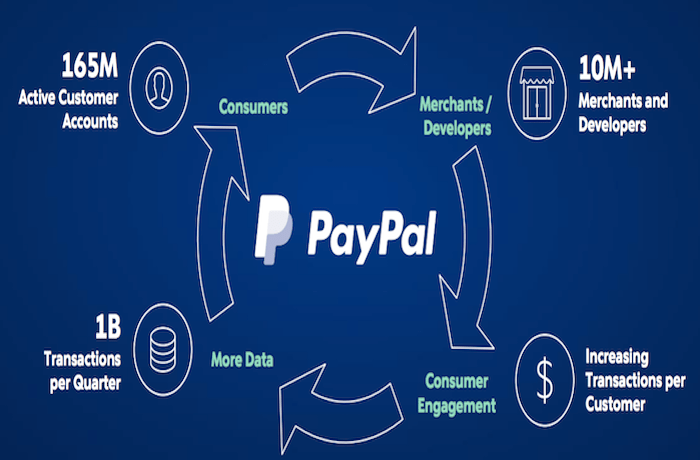
The wait is almost over.
In 22 days, PayPal and eBay will officially be two separate entities trading on the NASDAQ – EBAY AND PYPL.
“eBay and PayPal are two great, special businesses,” President and CEO of eBay Inc. John Donahoe noted in a statement that coincided with the news that eBay board of directors had officially approved the PayPal separation.
“As separate, independent companies, eBay, led by Devin Wenig, and PayPal, led by Dan Schulman, will each have a sharper focus and greater flexibility to pursue future success in their respective global commerce and payments markets,” Donahoe continued. “I am confident that eBay and PayPal each have the right leadership team, strategy, structure and operational discipline to create sustainable, long-term value for stockholders and deliver great opportunities and experiences for customers worldwide.”
With Friday’s announcement – which came shortly after markets closed for the weekend and most newsrooms on the East Coast had emptied – ecosystem watchers got something of a “twofer” when it comes to glimpses into the future of a soon-to-be independent PayPal.
One was a glimpse into the immediate future, specifically as it relates to PayPal’s shareholders and what will happen to their holdings over the next 22 days.
The second is a broader, if fuzzier, view of PayPal’s long-term vision and plan to march, unencumbered by eBay, onto the playing field known as digital payments. That landscape in 2015 bears as much resemblance to the one that existed 13 years ago when eBay first acquired it as the surface of the moon bears to Iceland. 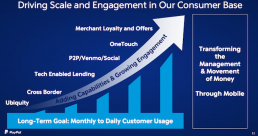
“Seventeen years ago, PayPal laid the foundation for eCommerce by making it safe and convenient to send money via email. We’ve been driving the expansion of eCommerce ever since, both online and via mobile devices. Together, online and mobile shopping form a $2.5 trillion eCommerce market that is growing at double-digit rates,” PayPal CEO-designee Dan Schulman noted in a blog post on PayPal’s blog the day the separation date was officially announced.
Schulman went on to note, however, that the opportunity so far is only the tip of the iceberg as far as the future of digital payments. Concurrent to the announcement and Schulman’s blog post, PayPal also released some of the slides from its roadshow presentation for investors — giving a glimpse into how PayPal is going to go after the 7/8s of the future of mobile payments that is still waiting to surface.
The Short Term: PayPal Stock For All
Well not PayPal stock for all – but PayPal stock for all holding eBay stock as of July 8.
As of the official split in mid-July, eBay shareholders will get one share of PayPal common stock for every one share of eBay stock they currently hold. The official distribution of PayPal stock will happen on July 17.
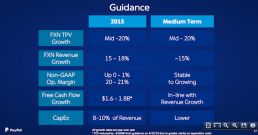 eBay also noted that starting on July 6 and lasting for 11 days through the distribution date, there will be two markets for eBay common stock. One will feature shares that trade in the “regular way” and thus be entitled to shares of PayPal common stock. There will also be a market for “ex-distribution” shares to trade without an entitlement to shares of PayPal common stock. Shares of eBay in the “ex-distribution” market will trade under the symbol EBAY.wi.
eBay also noted that starting on July 6 and lasting for 11 days through the distribution date, there will be two markets for eBay common stock. One will feature shares that trade in the “regular way” and thus be entitled to shares of PayPal common stock. There will also be a market for “ex-distribution” shares to trade without an entitlement to shares of PayPal common stock. Shares of eBay in the “ex-distribution” market will trade under the symbol EBAY.wi.
PayPal anticipates that “when-issued” trading will begin on or about July 6 under the symbol PYPL.wi. “Regular-way” trading in PayPal’s common stock is expected to begin on July 20, the first trading day following the completion of the separation. Those dates are all subject to final regulatory approval in the U.S. and abroad.
The Long-Term: Digital Payments Operating System
In his comments accompanying the announcement of the separation date, PayPal’s president and soon-to-be CEO Dan Schulman continued emphasizing the focus of the conversation to PayPal’s play at being the digital payments operating system of the future.
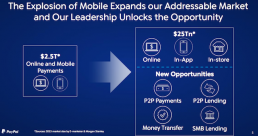 “Ninety percent of retail spending takes place in-person, in a store. With mobile devices becoming more and more central to our everyday activities, mobile experiences can bring online and in-person shopping together into a seamless whole,” Schulman noted in his remarks. “Already for many people, it is sometimes difficult to see clear lines between online, in-app or in-store experiences. As we help create this new world in which all commerce is digital commerce, our opportunity will be the entire $25 trillion universe of global retail spending, an addressable market that is 10 times larger than the one we have traditionally targeted.”
“Ninety percent of retail spending takes place in-person, in a store. With mobile devices becoming more and more central to our everyday activities, mobile experiences can bring online and in-person shopping together into a seamless whole,” Schulman noted in his remarks. “Already for many people, it is sometimes difficult to see clear lines between online, in-app or in-store experiences. As we help create this new world in which all commerce is digital commerce, our opportunity will be the entire $25 trillion universe of global retail spending, an addressable market that is 10 times larger than the one we have traditionally targeted.”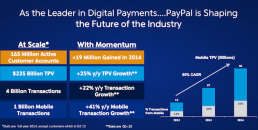
The digital payments market of 2015 is very a different place than it was the last time PayPal was on its own in the market in 2002. And, as many commentators have pointed out in the run-up to the split, digital payments has in the intervening time allowed mega players like Apple and Google to take big high-profile interests. As it runs up to the IPO, PayPal has increasingly pointed out that while the digital and mobile landscape has been evolving, they’ve had front row seats in driving its evolution, not to mention nearly 17 years to build a base of 165 million users and nearly 4 billion transactions processed annually, of which, they say 30 percent is driven by mobile devices.
Going into the split, PayPal is also doubling down its focus on being a complete solution for its 10 million merchant partners. That will focus on enabling a variety of payments and merchant services – across operating systems, platforms, technologies, devices and retail channels. The common thread is a portfolio of offerings that are scalable and secure. And, perhaps most important in a mobile marketplace where an increasing number of mobile players are using payments as a means to an end for enabling another revenue generating activity – ads, device sales, etc. – PayPal’s play is premised on openness and flexibility and enabling commerce for the merchants it serves and a suite of financial services for the consumers who opt into its digital financial services ecosystem.
“This is an exciting time for everyone at PayPal as disruptive technologies create once-in-a-lifetime opportunities to 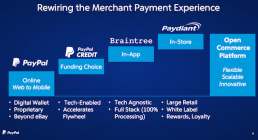 transform how people shop, merchants sell, and everyone manages their finances,” Schulman noted. “I’m looking forward to talking to investors about our vision for the role that PayPal will play as we continue to pursue our long-standing mission to make it easier for people to use their money to achieve their potential than ever before…”
transform how people shop, merchants sell, and everyone manages their finances,” Schulman noted. “I’m looking forward to talking to investors about our vision for the role that PayPal will play as we continue to pursue our long-standing mission to make it easier for people to use their money to achieve their potential than ever before…”
While PayPal’s future as the digital operating system unfolds, eBay’s soon-to-be-former payments arm has a very busy three weeks ahead of full on trading. The action started in after-hours trading Friday when eBay, which ended the day down – suddenly jumped three-tenths of a percent on the news of the separation.
PYMNTS will keep you posted as the countdown winds down, and as things just get even more interesting.